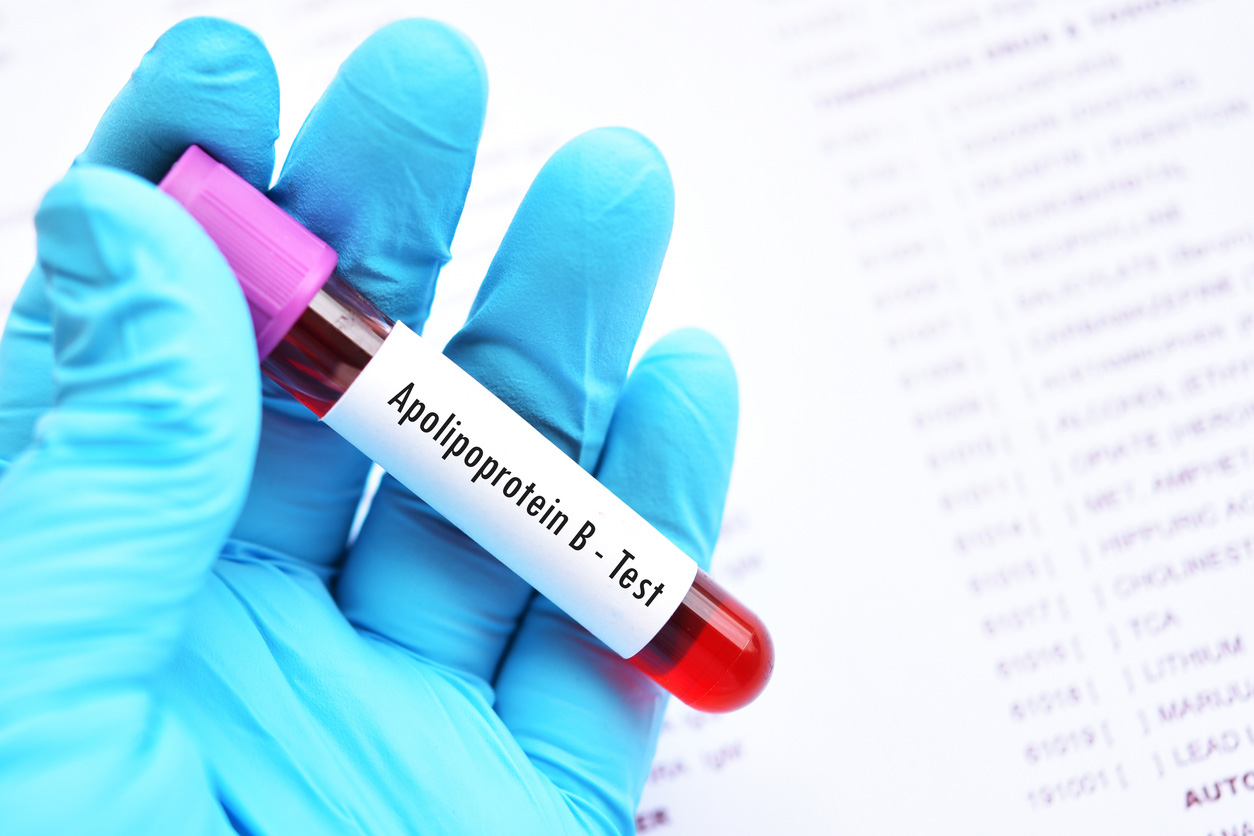This article first appeared in The Clinical Advisor, on Jan. 1, 2014.
Chelation therapy, a type of intravenous (IV) treatment promoted by some members of the complementary and alternative medicine community, has long been mired in controversy.
Often dismissed as quackery, chelation therapy was the subject of a recently completed NIH study (Trial to Assess Chelation Therapy [TACT]) that showed the practice to be of moderate benefit to heart-attack survivors. Yet the controversy continues unabated, with some calling the study misguided or flawed and few in the conventional medical community willing to embrace chelation therapy as a legitimate option for heart patients.
How chelation therapy works
Chelation therapy consists of a series of IV administrations of disodium or calcium ethylenediaminetetraacetic acid (EDTA) mixed with minerals and vitamins.
Typically, patients recline in a chair in the clinician’s office for one to four hours once to three times weekly for a series of 20 to 80 chelations. “Booster” chelations may be administered on a monthly basis or intermittently for years.
The purported benefits of chelation therapy vary but typically include the following:
- Improves such circulatory disorders as coronary artery disease (CAD), cerebrovascular disease, or peripheral vascular disease;
- Detoxifies the body of such heavy metals as lead, cadmium, and mercury; and
- Combats degenerative diseases and slows the aging process.
The procedure is usually not covered by Medicare or private insurance. The out-of-pocket costs are borne by patients and may total thousands of dollars for a single course of treatment.
History
The term chelation (derived from the Greek chelos or claw) refers to the mineral- or metal-binding properties of certain compounds that can hold a central cation in a pincerlike grip. Developed in Germany in 1935, EDTA was originally used as a means of binding and extracting calcium in the dye industry.
In the 1940s, Martin Rubin, professor emeritus of biochemistry at Georgetown University Medical Center in Washington, D.C., discovered EDTA’s effects on calcium in biological systems. This discovery led to the product’s use as an anticoagulant and is still used in “purple top” blood-collection tubes. Professor Rubin’s research led him to advance the use of EDTA for treatment of hypercalcemia and, eventually, lead poisoning.
In the 1950s and 1960s, several clinicians began to observe that patients treated for lead poisoning with IV EDTA experienced improvements in their cardiovascular conditions. This observation led to the widespread, but mostly empirical, use of EDTA therapy for heart patients within a growing community of alternative medicine practitioners.
Studies were undertaken, but these were mostly observational or uncontrolled and involved only small numbers of patients. Chelation therapy for other than the approved indications of refractory hypercalcemia or severe lead toxicity remained highly touted but poorly substantiated.
Clinicians practicing chelation therapy were sometimes targeted by medical boards for disciplinary action, irrespective of whether specific patient harm had occurred. Some states adopted regulations prohibiting the practice of chelation therapy. To this day, disodium EDTA is not approved by the FDA to treat any diseases. However, disodium EDTA is produced by compounding pharmacies for individual patients, so the treatment still can be obtained.
In 1998, the U.S. Federal Trade Commission (FTC) targeted the American College for Advancement of Medicine (ACAM), an organization that has trained and certified physicians in methods of safe administration of chelation therapy since the 1970s, for allegedly outsized advertising claims made regarding the treatment of atherosclerosis.
The FTC concluded that there was a lack of scientific studies to support these claims and that pro-chelation statements made by ACAM were false. As an alternative to litigation, ACAM stipulated that it would curtail public pronouncements presenting chelation therapy as an effective treatment for heart disease.
The public’s enthusiasm for chelation therapy remained undiminished, however. Between 2002 and 2007, use of chelation therapy to treat heart disease and other conditions grew in the United States by nearly 68% to 111,000 people.1 As of the start of the TACT Study in 2001, it was estimated that patients received 800,000 individual EDTA infusions per year.2
Until the TACT study, mainstream clinicians widely believed that EDTA chelation therapy for conditions other than acute lead intoxication was an unwarranted and dangerous modality. This is true to the extent that excessive doses of EDTA can be nephrotoxic; cases of renal failure resulting in dialysis or death have been recorded. Additionally, transient hypocalcemia provoked by EDTA calcium sequestration can trigger cardiac arrhythmias or sudden death.
But these outcomes have generally occurred only in rare instances where EDTA is administered in too high a dose and/or too rapidly or without regard to a patient’s glomerular flow rate. In 1989, a “Protocol for the Safe and Effective Administration of EDTA” was developed and subsequently updated.3
The detailed protocol provides strict criteria for patient selection and cautions clinicians to perform an initial evaluation of renal function using the Cockcroft-Gault equation and to frequently monitor renal function throughout a series of chelation treatments. Emergency procedures are outlined should adverse reactions occur.
Designing TACT
When TACT began in 2002, Stephen Straus, MD, Director of the National Center for Complementary and Alternative Medicine (NCCAM), opined, “The public health imperative to undertake a definitive study of chelation therapy is clear. The widespread use of chelation therapy in lieu of established therapies, the lack of adequate prior research to verify its safety and effectiveness, and the overall impact of CAD convinced NIH that the time is right to launch this rigorous study.”4
TACT was the brainchild of Gervasio Lamas, M.D., a Miami cardiologist and experienced NIH trialist since 1995. In 1999, a patient asked Dr. Lamas about undertaking chelation with a local alternative medicine practitioner. Dr. Lamas initially discouraged the patient but later realized there was no clinical trial information upon which to base his opinion, and TACT was soon born.
Practitioners of chelation therapy were delighted at the prospect of a large study underwritten by the U.S. government, but the community was not without reservations. Some seasoned chelation practitioners, harried by years of perceived persecution by the medical establishment, were wary of a trap and did not trust Dr. Lamas.
Others questioned whether it was wise to cooperate with Dr. Lamas in view of the fact that, with or without a big study, chelation was performed anyway, albeit with the disapproval of mainstream medicine. Why risk a negative outcome?
There was even concern that, should the trial be successful, the therapy might be co-opted by conventional cardiologists or adopted by Medicare and private insurers with strict caps on reimbursement.
Many raised concerns about the possibility that the study might not be robust enough statistically. Even with a hefty $31.6 million allocation from the NIH, could enough patients of the right type be recruited and treated adequately to capture and highlight—under artificial experimental conditions—the benefits of chelation therapy?
There also were methodological concerns about what end points would be measured. Would the study track hard statistics such as coronary deaths or cardiac events, or would more subtle markers based on changes in circulation (e.g. angiography, radionuclide stress tests, positron emission tomography scans, coronary artery calcium scoring) be needed to delineate subtle effects of chelation?
When determining the types of patients to be recruited for the trial, there was concern that the benefits of chelation might not be easily discerned if the participants were too healthy; patients who were very sick might be too far gone to experience disease reversal with chelation. In addition, ethical considerations would mandate that sick heart patients be correctly medically managed on a proper array of heart drugs, which might blunt the efficacy of chelation were it not applied as a stand-alone therapy.
The number of chelations each patient in the trial would undergo was another factor to be considered. Many individuals with advanced heart disease have succeeded with 60 to 100 or more chelations, but the practical dictates of a large-scale study argued for a more manageable number (i.e., 40). However, with such a low number of chelations, many proponents were worried that the treatment’s upside would not be sufficiently reflected.
A fair amount of debate also centered on how best to study chelation in isolation when the therapy is typically administered as the anchor of a transformational experience that includes lifestyle modification (healthful diet, adequate exercise, reduced stress) and a regimen of numerous vitamins and supplements.
The researchers had to determine how chelation therapy could be subjected to a double-blind, placebo-controlled study, the gold standard of scientific inquiry. The final hurdle was how to recruit a sufficient number of patients to participate in an arduous (albeit free) regimen of IV treatments knowing that there was a 50/50 chance of being infused with inactive colored water as part of the placebo group.
Dr. Lamas and his research team took great care to address these challenging questions. It was decided that the trial subjects be patients aged 50 years and older who had suffered an MI at least six weeks prior to the initiation of chelation.
Exclusion criteria included chronic renal failure (creatinine ≥2.0 mg/dL), liver disease, current smoking or revascularization procedure within the past six months. Placebo and control arms alike were to be carefully managed with maximal medical therapy (i.e., anticoagulants, statins, beta blockers and antihypertensive medications). In fact, 90 percent of the participants were on blood thinners, and 83 percent had undergone revascularization. With a median age of 65 years, the majority of the patients were obese (average BMI 30), and many had diabetes.2
Approximately half of the patients in TACT were recruited from alternative medicine practitioners and treated in their offices; the other half were treated at conventional medical centers. To solve the placebo conundrum, after randomization, active and placebo infusions were prepared off-site and delivered in blinded fashion to trial sites.
Extensive debate preceded the initiation of TACT with regard to whether trial participants should receive oral vitamins typical of chelation practice. Some trial designers were concerned that this would confuse the issue given the fact that previous studies assessing the merits of multivitamins in prevention of cardiovascular disease have yielded conflicting results (some even suggesting harm).
Chelation practitioners argued that giving vitamins with chelation more accurately reflects real-world chelation practice. Besides, it was argued, EDTA reacts with calcium, zinc, copper and other micronutrients, thereby raising at least the theoretical specter of iatrogenic depletion if supplements are not included in the study.
The pro-multivitamin faction ultimately won out, resulting in a two-by-two factorial design: active chelation plus vitamins; active chelation plus placebo vitamins; placebo chelation plus vitamins; and placebo chelation plus placebo vitamins.
Opposition to TACT
Almost as soon as TACT had begun, critics of “unscientific” medicine harshly assailed the study. In 2008, a group authored an article that argued for the abandoning of TACT.5 The authors cited a variety of reasons for their opposition to the study and leveled accusations of conflict of interest and scientific impropriety against some of TACT’s investigators.
The article claimed that the inefficacy of chelation had already been sufficiently adjudicated by previous studies. The authors concluded that the trial posed unacceptable risk to its subjects and was a waste of money.
In a rebuttal that appeared in the Journal of American Physicians and Surgeons, Beth Clay, a former member of the U.S. House of Representatives, Committee on Government Reform, pointed out that the authors of the anti-TACT article “derive income from legal compensation for testifying against medical professionals who use chelation or other alternative or complementary therapies in their practices.”6 Ms. Clay also claimed that investigation of off-label uses of FDA-approved drugs is essential for progress in medicine.
TACT was beset by other problems as well. Enrollment proceeded slowly, and inadequate patient recruitment threatened to compromise the study’s statistical strength.
In 2003 and 2004, the deaths of two children were attributed to EDTA chelation, resulting in an unfavorable series of press reports highlighting the hazards of chelation.7 Defenders of the therapy argued that these tragedies resulted from dangerously rapid administration of disodium EDTA, which should be infused gradually over the course of three to four hours, as the TACT protocol dictated.
The low-water mark for TACT occurred in 2008 when the trial was temporarily halted after the Office for Human Research Protections of the U.S. Department Health and Human Services was persuaded by critics to launch an investigation. After nearly a one-year delay, the trial was exonerated and allowed to proceed.
Despite many obstacles, TACT was finally completed in 2011 and presented at the American Heart Association’s 2012 Scientific Sessions in Los Angeles.
Results of TACT
Overall, those receiving chelation had an 18 percent reduced risk of subsequent cardiovascular events, such as heart attack, stroke, hospitalization for angina, or coronary revascularization or death from any cause. A cardiovascular event occurred in 222 patients (26 percent) in the chelation group and 261 patients (30 percent) in the placebo group. This advantage achieved statistical significance.
Of particular note was a subgroup analysis that revealed that two cohorts of participants enjoyed an exceptional reduction in risk for cardiovascular events. Those with diabetes had a 39 percent reduction in risk, and those who had experienced a specific type of heart attack (an anterior MI) had a 37 percent reduction in risk.
An NIH-appointed Data and Safety Monitoring Board oversaw the trial throughout its entirety, providing ongoing review of patient safety. Roughly comparable numbers of chelation and control patients cited “adverse reactions” as a reason for leaving the study. There were two severe unanticipated adverse reactions in each group, one of which resulted in death in each group.
One patient in the active chelation group required hospitalization for transient hypocalcemia, but the much-feared side effect of renal failure did not emerge in chelation patients, despite thousands of infusions. The rate of heart failure was not increased by chelation.
Although cardiac endpoints were impacted by chelation therapy, no overall enhancement of quality of life was found. Patients’ daily functioning and sense of mental well-being remained unchanged while receiving chelation therapy.
Reactions to TACT
There was no shortage of editorials written in the aftermath of TACT. Steven Nissen, M.D., a cardiologist at the Cleveland Clinic, wrote, “Given the numerous concerns with this expensive, federally funded clinical trial, including missing data, potential investigator or patient unmasking, use of subjective end points, and intentional unblinding of the sponsor, the results cannot be accepted as reliable and do not demonstrate a benefit of chelation therapy.” Dr. Nissen concluded, “The findings of TACT should not be used as a justification for increased use of this controversial therapy.”8
In an unprecedented step, the editors of The Journal of the American Medical Association (JAMA) wrote a letter defending their decision to publish the TACT study, highlighting the fact that their review went above and beyond the routine due diligence accorded to studies that appear in the journal.
“Because articles published in journals like JAMA can influence the practice of medicine, this level of scrutiny of TACT reflects our commitment to fulfilling the responsibility to try to ensure that every article published in JAMA is valid and is reported accurately,” the editors wrote in a letter accompanying the published trial.9 In the end, the editor conceded that TACT was, “a positive, if perplexing, study [that] suggested that chelation therapy may modestly improve clinical outcomes in patients after an acute MI.”
Even TACT researchers did not recommend the routine use of chelation therapy in post-MI patients. These researchers believed that the study results should only be used to guide future research. Eric Topol, M.D., a cardiologist with the Scripps Translational Science Institute in San Diego, struck a conciliatory note.
“Back in 2003, when this trial was announced, I thought it was a crazy notion,” said Topol. “At the end of the day, after all this work of all these investigators, I give them credit, and I give the JAMA editors credit for publishing it.”10
However, the most recently published analysis of the TACT data uncovered an even more robust protective effect of chelation, specifically for post-MI patients with diabetes.11 Researchers reported a 51 percent reduction in cardiovascular risk in the subgroup of persons with diabetes in the treatment arm that received chelation plus vitamins versus persons with diabetes treated with placebo.
According to the study authors, “These findings, if replicable, would have an impact on the health of patients with diabetes. We emphasize, however, that these results are based on a subgroup of the overall trial, albeit prespecified, and therefore must be interpreted with caution.”
Multivitamins and heart disease
While TACT was not empowered to properly address the question of whether multivitamins impact CAD, the study did deliver provocative data on supplement usage. Owing to its two-by-two factorial design, half of the TACT participants received multivitamins (with or without active chelation).
In the vitamin arm of TACT, treatment with high-dose vitamin therapy resulted in a statistically nonsignificant 11 percent relative reduction in the risk of death, MI, stroke, coronary revascularization and hospitalization for angina when compared with patients who received placebo vitamins. However, the addition of high-dose multivitamins was found to boost the efficacy of chelation, suggesting synergy between chelation and supplements in conferring protection from adverse cardiovascular endpoints. This contrasts with previous studies that suggested an adverse effect of certain supplement regimens on circulatory disease.
The future of chelation therapy
It still is unclear whether the benefits of chelation therapy are derived from EDTA or some of the other components of the IV cocktail such as magnesium, vitamin B, vitamin C or procaine. TACT was not designed to determine chelation therapy’s mechanism of action.
Dr. Lamas hypothesizes that chelation therapy eliminates heavy metals associated with damage to systems in the blood that combat reactive oxygen species. Dr. Lamas points out that lead and cadmium are associated with higher incidences of such vascular events as stroke, heart attack and renal insufficiency.
Could chelation therapy join the armamentarium of treatments offered by conventional cardiologists? Dr. Lamas does not see this happening anytime soon. “Receiving IV chelation is such a time-consuming and expensive treatment for patients,” he said. “The ideal would be for a pharmaceutical company to research and develop an oral version of this therapy for patients who have had a heart attack and those with diabetes.” (See “Can oral chelation therapy be trusted.”)
More extensive analysis of the TACT data will allow researchers to tease out potential relationships between chelation and such surrogate markers as cholesterol and cholesterol subfractions, homocysteine and C-reactive protein. This analysis might provide clues to chelation’s benefits.
Because of federal budgetary constraints and the chorus of criticism that “soft” research into alternative therapies incites, it is unlikely that another government-sponsored study of chelation will be undertaken in the near future.
Industry funding, along the lines of conventional pharmaceutical research, is unlikely to materialize due to the vague proprietorship and regulatory status of disodium EDTA, whose marketability may lie only in the niche realm of a small number of alternative practitioners treating a relatively small population of patients.
Ronald L. Hoffman, MD, the founder and medical director of the Hoffman Center in New York City.
References
- Barnes PM, Bloom B, Nahin RL. Complementary and alternative medicine use among adults and children: United States, 2007. Natl Health Stat Report. 2008;12:1-23.
- Lamas GA, Goertz C, Boineau R, et al. Effect of disodium EDTA chelation regimen on cardiovascular events in patients with previous myocardial infarction: the TACT randomized trial.JAMA. 2013;309:1241-1250.
- Rozema TC. The protocol for the safe and effective administration of EDTA and other chelating agents for vascular disease, degenerative disease, and metal toxicity. J Advancement Med. 1997;10:5-100.
- National Center for Complementary and Alternative Medicine. NIH launches large clinical trial on EDTA chelation therapy for coronary artery disease.
- Atwood KC, Woeckner E, Baratz RS, Sampson WI. Why the NIH Trial to Assess Chelation Therapy (TACT) should be abandoned. Medscape J Med. 2008;10:115.
- Clay B. Study of chelation therapy should not be abandoned. J Am Physicians Surg. 2009;14:51-57.
- Brown MJ, Willis T, Omalu B, Leiker R. Deaths resulting from hypocalcemia after administration of edetate disodium: 2003-2005. Pediatrics. 2006;118:e534-6.
- Nissen SE. Concerns about reliability in the Trial to Assess Chelation Therapy (TACT). JAMA. 2013;309:1293-1294.
- Bauchner H, Fontanarosa PB, Golub RM. Evaluation of the Trial to Assess Chelation Therapy (TACT): the scientific process, peer review, and editorial scrutiny. JAMA. 2013;309:1291-1292.
- Medscape. Chelation therapy in TACT: Daring to challenge dogma (and suspend disbelief). Available at www.medscape.com/viewarticle/802786.
- Escolar E, Lamas GA, Mark DB, et al. The Effect of an EDTA-based chelation regimen on patients with diabetes mellitus and prior myocardial infarction in the trial to assess chelation therapy (TACT). Circ Cardiovasc Qual Outcomes. 2013 Nov 19.
All electronic documents accessed January 7, 2014.






